FW
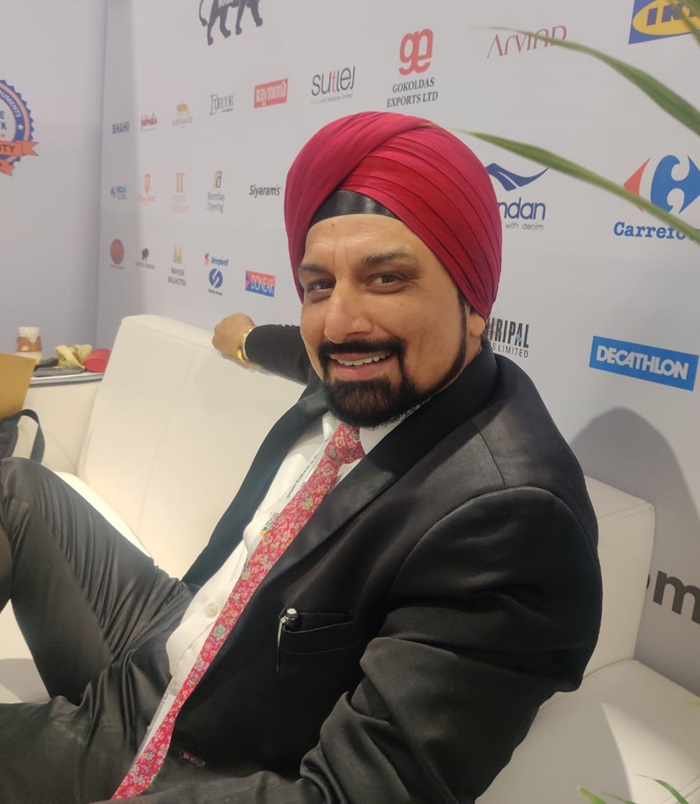
In the bustling world of textiles, where precision and quality are paramount, the integration of artificial intelligence (AI) into laboratory instruments is revolutionizing the industry. Manjit Singh Saini, the Managing Director of Paramount Scientific Instruments, stands at the forefront of this transformation, leading the charge with innovative solutions that promise to enhance efficiency and accuracy in textile testing.
As the textile industry grapples with the challenges of quality assurance, Saini emphasizes the significance of AI in simplifying complex processes. One of the groundbreaking instruments developed under his leadership is the GSM AI, designed to measure the grams per square meter (GSM) of various fabrics - woven, knitted, or non-woven. This state-of-the-art device eliminates the need for traditional methods involving cutters and weighing balances, which are not only time-consuming but also prone to human error. Instead, the GSM AI utilizes high-resolution cameras and advanced image processing algorithms to deliver instant and precise measurements.
Saini articulates a vision where AI does not merely augment human capabilities but transforms the very nature of textile testing. "AI is the next future of human generation," he asserts, highlighting its potential to simulate human intelligence in machines capable of problem-solving, reasoning, and learning. This shift allows professionals in the textile sector to focus on strategic decision-making rather than mundane tasks, ultimately fostering a more innovative and productive work environment.
Despite the promising advancements, Saini acknowledges the concerns surrounding AI adoption, particularly regarding costs and job displacement. He reassures stakeholders that while the initial investment in AI-based equipment may be higher, the long-term savings—stemming from reduced material waste and maintenance costs—far outweigh the expenses. The GSM AI, for instance, not only saves on blades and pads but also enhances safety by minimizing the risks associated with traditional cutting tools.
The textile industry, especially post-pandemic, is witnessing a renewed focus on cost-effectiveness and operational efficiency. Saini's commitment to integrating AI into textile lab instruments aligns perfectly with this trend, promising a future where quality control is not just a necessity but a seamless part of the production process. As Paramount Scientific Instruments continues to innovate, the role of AI in textiles is set to expand, paving the way for smarter, safer, and more efficient laboratory practices.
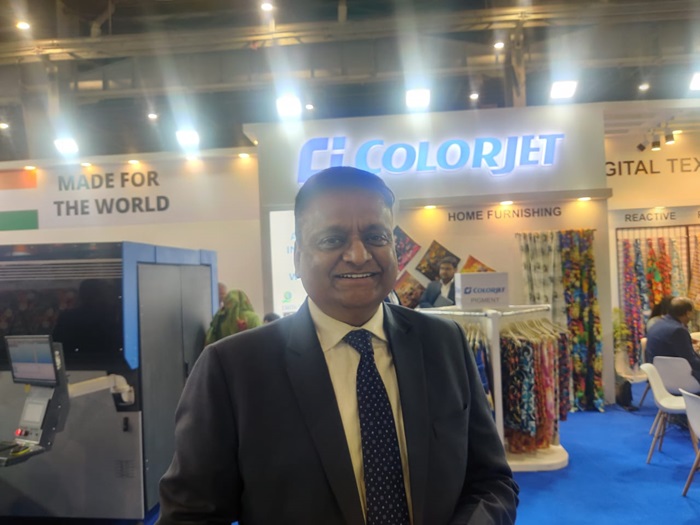
In the heart of textile hub, where the aroma of cotton mingled with the rhythmic clatter of looms, Madhu Sudhan Dadu (MS Dadu), Chairman of Colorjet India Limited, wasn't just building a business; he was weaving a new future for Indian textiles. His journey is a testament to the transformative power of the 'Make in India' initiative, a movement designed to establish India as a global manufacturing powerhouse.
A decade ago, Dadu recognized a critical weakness in India's textile industry. Despite being a global textile giant, India relied heavily on imported machinery. This dependence not only drained resources but also stifled innovation. Dadu, a technologist at heart, was determined to change this narrative.
The initial years were challenging. Government policies were not always conducive to domestic manufacturing, and the textile machinery sector was underdeveloped. Skepticism was rife, with many in the industry preferring established European brands. Undeterred, Dadu believed in India's potential – its skilled workforce, technical expertise, and abundant resources.
With a small team of dedicated engineers, he embarked on developing digital textile printers, a nascent technology with immense global potential. This transition from traditional to digital methods represented a revolution in textile processing. Dadu's machines promised enhanced efficiency, superior quality, and cost-effectiveness, and he was determined to prove their mettle.
The team faced numerous hurdles. The market was saturated with imported machines, and the perception of Indian products as inferior posed a significant challenge. Dadu knew that to succeed, they had to not only match but surpass the quality of their European competitors. He invested heavily in research and development, ensuring his products were both innovative and tailored to the specific needs of Indian manufacturers.
Slowly, their efforts began to bear fruit. As the first machines rolled out of the factory, Dadu's confidence grew. He showcased their capabilities at trade fairs, demonstrating the efficiency and quality of his digital printers. The response was overwhelmingly positive. Customers began to appreciate the value of supporting local manufacturing, and word spread rapidly.
Dadu understood that success wasn't just about sales; it was about providing comprehensive solutions. He prioritized customer support, ensuring every client received the assistance needed to optimize their operations. This commitment to service distinguished Colorjet from its competitors, building loyalty and trust.
As the 'Make in India' initiative gained traction, the government began to recognize the importance of the textile machinery sector. Policies started to evolve, favoring local manufacturers and promoting the use of Indian-made machines. Dadu seized this opportunity, advocating for a level playing field where Indian products could compete fairly. He became a voice for other manufacturers, urging the government to address the inverted duty structure and incentivize domestic production.
Over time, Colorjet India Limited became synonymous with quality and innovation in the textile machinery industry. Dadu's vision of a self-reliant textile sector was becoming a reality. The company not only flourished but also inspired a new generation of entrepreneurs to explore the vast potential of manufacturing in India.
Reflecting on his journey, Dadu often shared his mantra: "Innovation is born of necessity, and success is built on perseverance." His story is not just about machines; it's about a vision for a self-reliant India, where local manufacturing can compete with the best globally.
Madhu Sudhan Dadu's legacy extends beyond the machines he created. It's embodied in the spirit of 'Make in India' that he championed – a spirit of resilience, innovation, and unwavering faith in the potential of Indian manufacturing.
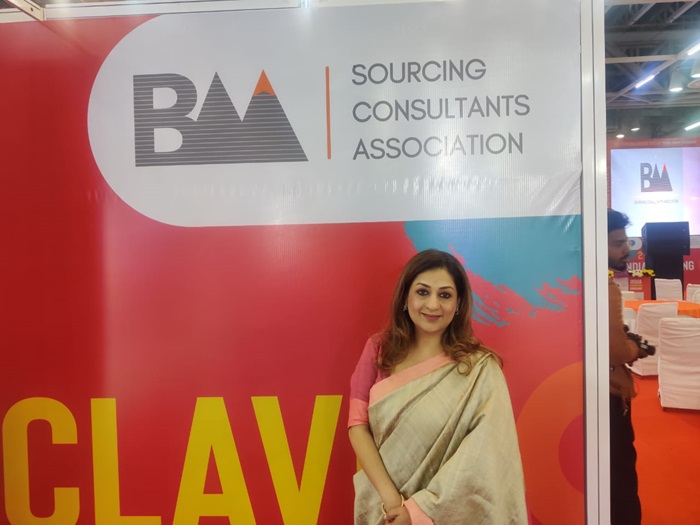
The global fashion industry is recalibrating its compass, recognizing the vibrant and diverse opportunities beyond China. While China remains a supplier, apparel brands are increasingly being attracted by the unique potential of other suppliers. This shift is evident in the strategic initiatives and impressive growth figures reported by leading fashion brands.
Shifting sourcing patterns
Traditionally, China has been the dominant player in global apparel sourcing, holding a significant market share. However, their dominance is gradually decreasing. World Trade Organization (WTO) and McKinsey estimates indicate China's share, which was once over 40 per cent, is now reducing, though it still remains the largest single sourcing nation. Concurrently, other nations are seeing increased shares. While data can vary based on the specific product category, some general trends that have emerged are:
China: While still dominant, its share is decreasing. Estimates place it somewhere between 30-35 per cent currently (though this can fluctuate), down from higher figures in the past.
Bangladesh: Remains a significant player, particularly in basic garments, often estimated to hold a 6-8 per cent share or more.
Vietnam: Has seen growth and is often cited as a key beneficiary of the ‘China Plus One’ strategy, potentially holding a 5-7 per cent share.
India: Is also gaining traction, with estimates placing its share anywhere from 4-6 per cent and growing, though realizing its full potential is still a work in progress.
There are several reasons for the changes in apparel sourcing. Geopolitical factors are a major reason as trade tensions and political instability in certain regions are pushing buyers to diversify their sourcing to reduce risks. Moreover, rising wages in traditional manufacturing hubs like China are making other countries with lower labor costs more attractive. Also, the COVID-19 pandemic exposed vulnerabilities in global supply chains, prompting buyers to seek more diversified and resilient sourcing options. Growing consumer awareness of environmental and social issues is pushing brands to source from manufacturers with sustainable practices. Add to it automation and digitalization that are changing the dynamics of manufacturing, making it possible for some countries to become competitive even with slightly higher labor costs.
India in this changing scenario
India is well-positioned to capitalize on these shifting sourcing patterns. To its advantage it has a large pool of skilled labor, particularly in textile and garment manufacturing. India also has a long history in textiles and a well-developed manufacturing ecosystem, from raw materials to finished garments. The government has undertaken various initiatives to promote textile and garment exports, such as production-linked incentive (PLI) schemes and streamlined regulations. Also, Indian manufacturers are increasingly adopting sustainable practices, aligning with the growing demand for eco-friendly and ethical products.
Tanya Bhatia, General Secretary, Sourcing Consultants Association (BAA) notes, "When they talk of sustainability the global buyers look at India as their partner for sustainable products and they are willing to hand hold us and you know nurturing us and taking us all the way forward. They do not look at China for a sustainable product..." She further adds, "...India is moving far ahead of the anticipated rate and global partners look at India and let me tell you that most other Asian countries are not even providing these measures to their customers. It's only India which is on the forefront and whenever they look at a sustainable requirement, they reach out to India." Bhatia also emphasizes the potential for growth, stating, "...we are rather optimistic about having our fair share of global space in comparison to China," implying that India is seen as a viable alternative and is poised to gain market share. Regarding sourcing strategies, Bhatia observes, "The China plus one policy is going to benefit India..." highlighting how this diversification strategy positions India as a prime beneficiary.
Insights from ‘The State of Fashion 2025’ report
Latest ‘The State of Fashion’ report, by McKinsey & Company and Business of Fashion (BoF), offers valuable insights into the apparel industry's future. The report emphasizes the need for brands to build more resilient and agile supply chains. This aligns with India's strengths as a diversified sourcing destination, reducing reliance on single-source manufacturing. The report often highlights the need for companies to diversify their manufacturing footprint and build in redundancies.
The report consistently underscores the growing importance of sustainability. This is a critical area where India can excel, given its increasing focus on eco-friendly practices and ethical labor standards. Consumers are more and more demanding transparency and traceability. While not always explicitly stated as ‘nearshoring’, the report acknowledges the trend towards more regionalized supply chains, with brands seeking to source closer to their end markets. This can benefit India, especially for brands serving markets in Europe and other parts of Asia. The report also stresses the importance of digitalization and technology adoption across the value chain. This is a crucial area for India to focus on to enhance its competitiveness. Automation, data analytics, and other digital tools are becoming increasingly important.
Impact of China Plus One and Bangladesh Plus One
Meanwhile, the China Plus One strategy has significantly benefited countries like India, Vietnam, and Bangladesh. While Bangladesh remains a major player due to its low labor costs, India is gaining traction by offering a more comprehensive manufacturing ecosystem, skilled labor, and a focus on sustainability. The Bangladesh Plus One strategy, while relevant, is less impactful on India as it primarily focuses on diversifying away from Bangladesh within a similar cost-sensitive segment. India is aiming for a more diversified product range, including higher-value garments.
New opportunities for India
The changing dynamics of apparel sourcing has created many new opportunities for India.
Increased export share: India can significantly increase its share of global apparel exports by attracting buyers looking for alternative sourcing destinations.
Value addition: India can move up the value chain by focusing on higher-value garments, design capabilities, and brand building.
Technological advancement: The adoption of advanced manufacturing technologies can further enhance India's competitiveness.
Sustainable manufacturing: India can become a leader in sustainable apparel manufacturing by promoting eco-friendly practices and ethical labor standards.
But despite these opportunities, India also faces challenges. Inadequate infrastructure, such as transportation and logistics, hinder efficient manufacturing and exports. Similarly, while India has a large workforce, there is a need to address skill gaps in certain areas, such as design and technology. India faces competition from other countries with lower labor costs or specialized manufacturing capabilities. And complex regulations and bureaucratic processes can create hurdles for businesses.
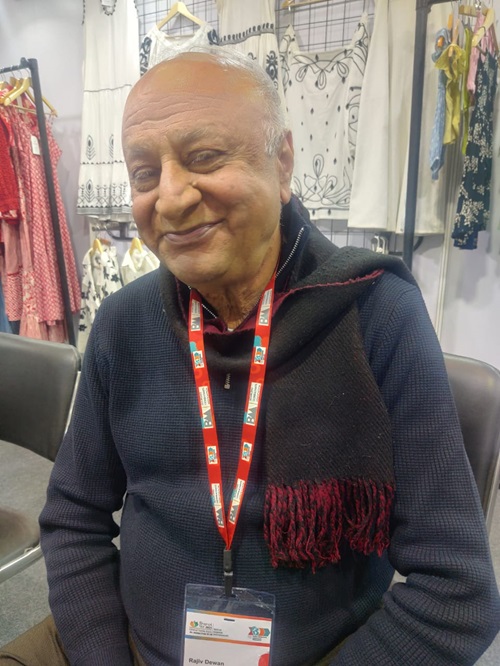
Rajiv Dewan, ex President, GEAR, Jaipur (Ma’am Arts) shares his perspective on the export outlook: "See the trend for exports is going to be very, very healthy, you know, coming year onwards, I mean, what mid early 26, you know, the summer of Europe and America is going to be super hit." He affirms, "And going is very good for the exports. There's no doubt about it." Dewan connects export growth to broader economic benefits: "So exports, if they pick up, if they come up well, automatically the make in India will do good. You know, we are going to employ more people, more infrastructure, more development, more expansion." He also suggests a geopolitical advantage for India: "See what I feel is America has got very less options and they will definitely definitely be supporting India. Because China that chaos is there, that thing is there, so America will support India, this is what I feel."
Government support and recent initiatives
The Indian government has recognized the potential of the textile and apparel sector and has implemented several schemes and initiatives to boost its growth and competitiveness.
Production Linked Incentive (PLI) Scheme for Textiles: This scheme offers incentives to manufacturers of specific textile products to enhance domestic manufacturing and attract large investments. The PLI scheme has been a significant boost, attracting investment and aiming to increase production and exports. For example, several large textile companies have announced investments under this scheme.
National Textile Policy 2000: This provides a framework for the development of the textile industry, focusing on modernization, technology upgradation, and skill development.
Scheme for Integrated Textile Parks (SITP): This scheme aims to create world-class infrastructure for textile units, including dedicated zones for manufacturing, processing, and ancillary services.
Focus on Skill Development: Various programs are being implemented to address the skill gaps in the textile and apparel sector, ensuring a readily available workforce. Initiatives like the Pradhan Mantri Kaushal Vikas Yojana (PMKVY) play a role here.
The moot point is that the future of apparel sourcing is very promising for India. With the right policies, investments, and initiatives, India can solidify its position as a leading global sourcing hub. The focus on sustainability, technology, and value addition will be crucial for long-term growth and competitiveness.
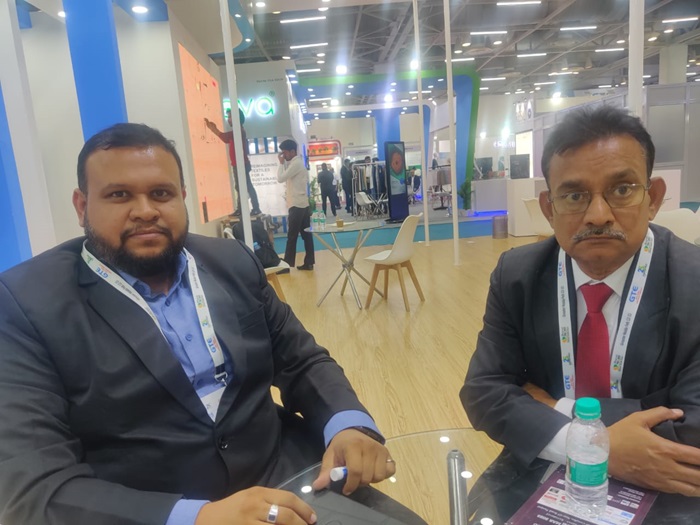
Sainathan R, Director, Eurotech Technical Solutions, highlights India's traditional strengths: "India has always been a traditional market for cotton. It is a cotton based market and for almost 70 to 80 years now, we know how to dye cotton, how to process cotton, and how to perfectly make a good cotton garment." He also points out a key advantage: "India has got one advantage of labour. We are the highest population in India where our labour is going to help us." However, Sainathan also identifies challenges: "The global shift has now gone towards synthetic fabrics. So the demand for cotton is getting lower, the demand for synthetic fabrics is getting higher. India as of now is very much limited in technology and knowledge about how to handle this kind of new age fabrics which is for performance, which is for technical textiles and other things which are more synthetic based." He further notes, "Also the initiative to invest in new machineries, upgrade on new machineries, that is getting little bit into a situation where they are not confident enough how much order will come to India." Sainathan emphasizes the impact of taxation and import duties.
'Made in India' apparels are fast emerging as a force to be reckoned with in both the domestic and global markets. This resurgence is due to many reasons, like evolving consumer preferences, government initiatives, and the industry's own focus on innovation and sustainability. However, the rise of imports, particularly from Bangladesh, Vietnam, and the EU, poses a significant challenge.
In fact, the 'Made in India' label is no longer associated with just basic or traditional wear. Today, it covers a wide range of styles, from contemporary fashion to hot couture, catering to diverse tastes and preferences. Indian designers and brands are experimenting with new fabrics, techniques, and designs, creating unique and globally appealing products.
What’s driving this change?
There are many reasons for the rise in 'Made in India' apparels. Growing domestic demand is a major one. India's growing middle class with higher disposable incomes have led to the rise of demand for branded and high-quality apparel. Consumers are becoming more fashion-conscious and are willing to spend on clothing that reflects their personal style.
Meanwhile, the government has been actively promoting the 'Make in India' initiative, which aims to boost domestic manufacturing and create jobs. Various schemes and incentives have been introduced to support the textile and apparel industry, including production-linked incentive (PLI) schemes and export promotion measures. With growing awareness about environmental and social issues, more and more consumers are demanding sustainable and ethically produced clothes. Indian manufacturers are responding by adopting eco-friendly practices, using organic cotton, and ensuring fair labor conditions. The adoption of new technologies, such as automation and digitalization, too is improving efficiency and productivity in the Indian apparel industry. This is enabling manufacturers to produce high-quality garments at competitive prices.
What works for India?
There are several catalysts of apparel industry’s growth in India. For example, India is one of the largest producers of cotton and other raw materials, giving it a competitive advantage in terms of sourcing and cost. India also has a large pool of skilled workers in the textile and apparel sector, which is crucial for maintaining quality and craftsmanship. And compared to other major apparel manufacturing hubs, India offers cost advantages in terms of labor and production, making it an attractive destination for global brands.
India's apparel exports have been steadily increasing, with a focus on diversifying markets and product categories. The country is well-positioned to capitalize on the growing global demand for sustainable and ethically produced clothing.
Meanwhile, the rise of 'Made in India' apparel presents several new opportunities for the country.
Increased market share: Indian brands can capture a larger share of the domestic market by offering high-quality and affordable clothing options.
Global expansion: Indian manufacturers can expand their presence in international markets by leveraging their cost competitiveness and focus on sustainability.
Job creation: The growth of the apparel industry can create numerous jobs across the value chain, from manufacturing to retail.
Brand building: Indian designers and brands have the opportunity to build global brands that are recognized for their quality, innovation, and sustainability.
Competitors a concern
Despite a domestic push India faces increasing competition from apparel imports, particularly from Bangladesh, Vietnam, and the EU. These countries often benefit from preferential trade agreements, lower labor costs, and efficient manufacturing processes.
Bangladesh for example has emerged as a major player in the global apparel market, specializing in mass production of basic garments. Its competitive advantage lies in extremely low labor costs and duty-free access to many major markets. Vietnam on the other hand has gained prominence in apparel manufacturing, particularly in higher-value garments and sportswear. It benefits from free trade agreements and a focus on efficiency and quality. While the EU's apparel exports to India might be smaller in volume compared to Bangladesh and Vietnam, they often consist of premium brands and high-value items, competing with the higher end of the Indian market.
So what leads to a rise in apparel imports? First, are the Preferential Trade Agreements that countries like Bangladesh and Vietnam have with major importing nations, giving them a competitive edge in tariffs. What’s more, labor costs in some competing countries are significantly lower than in India, making their products more price-competitive.
These countries also have economies of scale as large-scale manufacturing facilities helps them in reducing production costs. And some countries have specialized in specific product categories, gaining expertise and efficiency in those areas.
How should India address this challenge?
India needs a multi-pronged approach to address the challenge of rising apparel imports. To begin with India should actively negotiate trade agreements that ensure a level playing field for domestic manufacturers. It should enhance domestic competitiveness. This involves improving infrastructure, reducing bureaucratic hurdles, and promoting skill development to enhance the efficiency and productivity of the Indian apparel industry. Focus on producing higher-value garments, including design-driven and branded products, to differentiate itself from competitors. Emphasize sustainable and ethical manufacturing practices to attract environmentally conscious consumers. And it’s important to support Indian brands in building their presence in the domestic market and expanding globally. Encourage the adoption of advanced technologies in the apparel industry to improve efficiency and reduce costs.
Indeed, the future of 'Made in India' apparel depends on how effectively the industry and the government address the challenges, particularly the increasing imports. By focusing on innovation, sustainability, and competitiveness, India can solidify its position in the global apparel market and capture a larger share of both domestic and international sales. The government's continued support, coupled with the industry's own initiatives, will be crucial in shaping the future of 'Made in India' apparel.
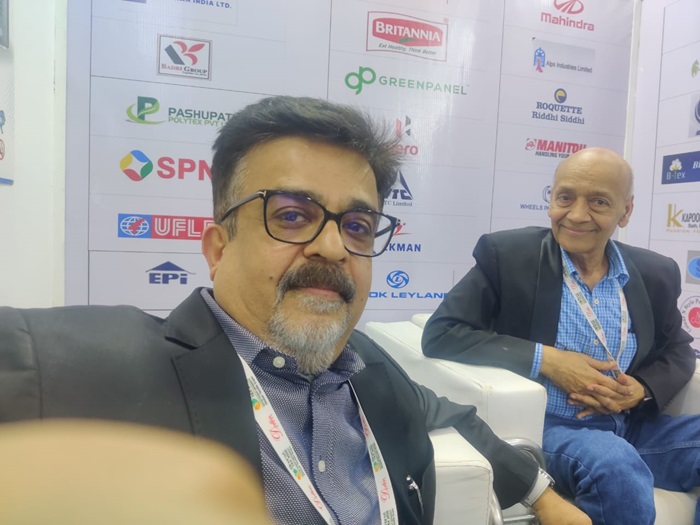
Polyspin has launched Nano 5 at DyeChem World Expo being organised concurrently with Bharat Tex 2025, an antimicrobial silver-based treatment for textiles in India. The company plans to expand the product’s reach throughout the country using its existing distribution network. Nano 5 is designed to eliminate bacteria, viruses, and fungi, and provide long-lasting protection against microbial growth even with regular use or washing. The product is eco-friendly, non-toxic, and safe for humans. Nano 5 is versatile and can be used in textiles, medical devices, and other surfaces requiring antimicrobial protection.
Polyspin’s CMD, Sandeep Arora, believes that the future of Nano 5 is promising, especially in light of the recent pandemic, as it offers protection against various germs, viruses, and bacteria. While the Indian market is still nascent and customers may not be fully aware of the benefits of antimicrobial products, Polyspin is committed to educating them.
Dr Anil Kumar Jain, who has extensive experience in textile chemistry and research, played a key role in the development of Nano 5. He highlights the product’s unique particle size, which is less than 5 nanometers, as a key factor in its effectiveness and durability. The smaller particle size increases the surface area, leading to higher reactivity, lower consumption, and improved washability.
Nano 5 works by releasing silver ions that bind to the OH group of the fabric, forming a strong bond that is resistant to washing. The silver ions effectively kill bacteria by breaking their membranes and neutralizing unpleasant odors caused by bacterial growth. The product is said to be economical and comparable in price to other suppliers in India, with superior performance due to its nanoparticle size.
Nano 5 has already been exported to the Hirdaramani industry in Sri Lanka during the Covid-19 pandemic, where it was used on denim and received positive feedback. Polyspin has global aspirations for Nano 5 and is looking to expand its market reach
Removing foreign parts from cotton is a major challenge, but Trutzschler’s T-SCAN technology is revolutionizing contamination control in rotor applications. Already proven in cotton ring lines, T-SCAN is now helping Indian spinners enhance yarn quality with its advanced detection and ejection system.
Cotton bales often contain unwanted materials like plastic, jute, metal, and colored contaminants, which can lead to yarn rejection. Polypropylene, in particular, poses a significant issue as it affects dye absorption and weakens fabric integrity. While ring spinning relies on yarn clearers to address this, rotor spinning faces limitations in polypropylene detection.
Enter T-SCAN. Its latest models, TS-T3 and TS-T5, effectively eliminate contaminants with specialized sensor modules. These systems remove various polypropylene types, including transparent and glossy variants, making them ideal for rotor and recycling applications.
Trutzschler customers in India are witnessing remarkable improvements. Ahmedabad-based Nandam Terry and Nandam Denim report significantly reduced color contamination with minimal cotton loss. “Fabric appearance has improved, and we now supply contamination-controlled yarn to premium brands,” says Ashish Raval, Vice President Spinning.
Thiagarajar Mills Ltd. in Madurai, a major denim yarn producer, has also adopted TS-T5 for rotor spinning. “Our contamination levels have dropped drastically, and maintenance is easy,” notes Senior VP Muthupalaniappa M.
Blue Rose Cotspin LLP, producing 20 tons of yarn daily, praises the TS-T3 for eliminating contamination complaints. Meanwhile, Punjab-based Patiala Gold LLP highlights its high efficiency and minimal downtime.
With up to 80 per cent less compressed air usage, T-SCAN ensures maximum separation with minimal fiber loss. Its low-maintenance, energy-efficient design makes it a game-changer for spinners striving for premium-quality yarn.
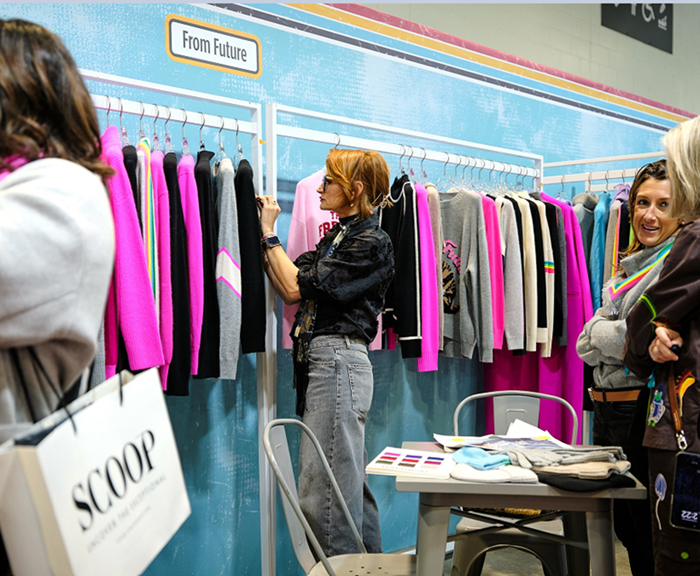
Scoop closed its doors at Olympia West, marking the successful conclusion of its Autumn/Winter 2025 edition. Over three action-packed days, the event brought together a vibrant mix of designers, buyers, and industry leaders, creating a dynamic space for business and creativity. The show attracted top retailers, from premium independent boutiques to major department stores, all exploring the latest trends and fresh collections.
Retailers and buyers engage with new collections
Scoop welcomed an impressive lineup of buyers, including The Place London, The Hambledon, Cordelia James, The Mercantile, Jules B, and Sass and Edge. Department store buyers from Galeries Lafayette, Le Bon Marché, John Lewis, Hoopers, Anthropologie, and Morleys also attended, scouting for standout collections. Additionally, Irish retailers such as Emporio, Nu Chic, Sorrento, Macbees, and Sybil explored emerging brands for the coming season. Attendees praised the event’s accessible layout, welcoming atmosphere, and carefully curated selection of brands.
Showcasing established and emerging talent
The event featured an exciting mix of designers, blending well-known names with fresh talent. Highlights included collections from Alohas, Gas Bijoux, Emily Lovelock, Fabienne Chapot, Nobody’s Child, Oats & Rice, Zapa, Augusta, and Bloom. Buyers noted the strength of Spanish brands, particularly Black to Grey, Bloom, and Indi & Cold. Many retailers emphasized the show’s ability to bring new and exciting labels to the forefront, enhancing their buying experience.
Exhibitors praise the show’s energy
Exhibitors were equally enthusiastic, describing the event as upbeat and highly productive. Ian Campbell Smith of Palladio London noted the strong buyer turnout and the diverse brand selection. Hester Moore of Helen Moore called it their best show in five years, highlighting consistent buyer engagement. Juls Dawson of Just Consultancies described the event as a top-tier trade show, emphasizing how busy their stands were and the high-quality interactions with UK boutiques.
Karen Radley, Founder and Managing Director of Scoop, celebrated the show’s success, noting the strong order placements and the industry’s positive outlook. “There’s a real sense of confidence in the market, and it’s fantastic to see buyers investing in fresh, innovative collections,” she said. With excitement already building for the next edition in July, Scoop continues to be a key platform for brands and retailers shaping the future of fashion.
Monforts and its long-time partner, Bengal Technology and Engineering, have successfully installed over 100 fully integrated textile finishing lines in Bangladesh over the past 30 years. At the upcoming Dhaka International Textile & Garment Machinery Exhibition (DTG) from February 20-23, Monforts specialists will highlight the company’s latest innovations in sustainable fabric finishing.
DTG, hosted at the International Convention City Bashundhara (ICCB), will feature over 1,000 global textile machinery brands from 31 countries. The event comes as Bangladesh’s textiles and apparel sector continues its rapid expansion, with over 6,000 factories now contributing to its status as the world’s second-largest exporter of readymade garments (RMGs). The government aims to boost RMG exports to $50 billion this year and $100 billion by 2030, making sustainable and efficient textile processing critical.
Monforts Head of Denim Hans Wroblowski emphasized the company’s commitment to reducing the CO₂ footprint of textile production. “Finishing is an energy-intensive process, and we have developed multiple solutions to optimize efficiency,” he said. Monforts Montex stenters widely used in denim and home textiles, offer high production throughput while ensuring significant energy savings.
Monforts latest innovations focus on energy efficiency, including the VarioMatex Padder for effective water removal, reducing drying costs, and the EcoApplicator, which uses kiss-roll technology for precise finishing in sportswear. The Universal Energy Tower improves heat recovery, cutting energy use by up to 25 per cent, while the ECO Booster System, integrated into Montex stenters, delivers up to 35 per cent energy savings.
These technologies can be retrofitted to existing lines, allowing manufacturers to upgrade without major investments. “With energy costs accounting for up to 70 per cent of production expenses, demand for energy-saving solutions is at an all-time high,” Wroblowski noted.
Monforts Thermex hotflue dyeing systems are widely used in Bangladesh, with over 900 installations worldwide. The Econtrol process, featured in 150 Thermex systems, enables rapid reactive dyeing in just two to three minutes, improving efficiency and sustainability.
Meanwhile, the MontexCoat coating unit is gaining traction in Bangladesh, with the first system installed at DBL Group. It offers versatile coating solutions, from full PVC coatings to minimal penetration treatments. Additionally, the coaTTex unit specializes in single-sided air knife and knife-over-roller coatings, making it a valuable addition for textile manufacturers.
“With strong interest in MontexCoat and coaTTex, we look forward to engaging with industry leaders at DTG,” Wroblowski added. “Bengal Technology and Engineering has been an excellent partner in Bangladesh, and together, we are ready to support the industry’s sustainable growth.”
Twenty-seven Bangladeshi apparel manufacturers participated in this year's Texworld Apparel Sourcing Paris, held at the Le Bourget Exhibition Centre. Held from February 10-12, 2025, this three-day fair provided a platform for these companies to connect with global fashion brands and secure orders for upcoming seasons.
Among the prominent companies who participated in the fair included Aaron Denim, Hoorain HTF, NZ Denim, Sara Fashionwear, and Nexgen Apparel. Other leading garment makers, including Asia Link Design, Flash Apparels, Pacific Sports, and Quality Apparels, were also present, with support from the Export Promotion Bureau (EPB).
Bangladeshi exhibitors showcased high-quality garments blending traditional craftsmanship with contemporary designs at the exhibition. As Bangladesh's garment industry gains increasing global recognition, its innovative designers and premium textiles are attracting the attention of international buyers, solidifying the country's growing influence in the fashion world.
This edition of Texworld Apparel Sourcing Paris featured over 1,259 exhibitors from 25 countries. The event highlighted the latest trends and innovations in the apparel industry, drawing buyers from across the globe. Key players from major sourcing destinations, including China, Turkey, India, and Pakistan, also participated in the event.
Pakistan’s textile and apparel (T&A) exports increased by 10.44 per cent to $6.146 billion during the first four months of fiscal year 2024-25, spanning July-October 2024. As per a report by All-Pakistan Textile Mills Association (APTMA), this achievement highlights the sector’s resilience, adaptability, and competitiveness in the face of global economic challenges.
Several key segments contributed to this surge in exports, demonstrating the sector’s strong performance. The country’s knitwear exports increased by 18.69 per centY-o-Y to $1.76 billion.
Exports of non-knit readymade garments grew by 25.40 per cent to $1.36 billion. Bedwear exports rose by 13.17 per cent to $1.07 billion while cotton fabric exports increased by 5.25 per cent, to $679.43 million. These gains reflect the industry’s ability to adapt to shifting global demand while consistently delivering high-quality products.
Despite the export surge, import trends present a mixed picture, revealing both challenges and opportunities for the sector. Imports of synthetic fibers declined by 23.07 per cent Y-o-Y to $138.82 million. This drop indicates a shift toward either greater domestic production or reduced reliance on synthetic materials due to changing market preferences and production techniques. Industry insiders suggest that the decline may also reflect a strategic focus on optimizing costs by sourcing alternatives locally.
The mixed nature of import trends underscores the importance of strategic investment. While reduced synthetic fiber imports could indicate progress toward self-sufficiency, the rise in machinery imports reflects forward-looking efforts to modernize and remain competitive.
Experts believe that sustained growth in exports will depend on the industry’s ability to balance cost-effective production with ongoing technological advancement. APTMA remains committed to fostering growth and sustaining this positive export trajectory.
The association is working closely with industry stakeholders to promote innovation, improve quality standards, and expand into new markets. The recent rise in exports reflects the success of these efforts, but APTMA’s leadership acknowledges that sustained investment in infrastructure and modernization will be critical in maintaining momentum.











